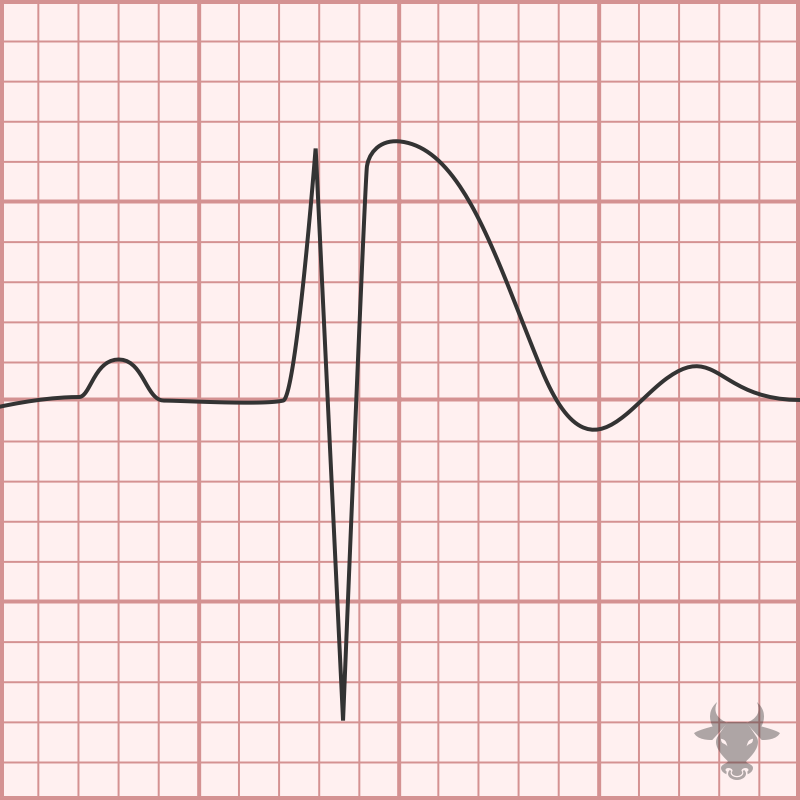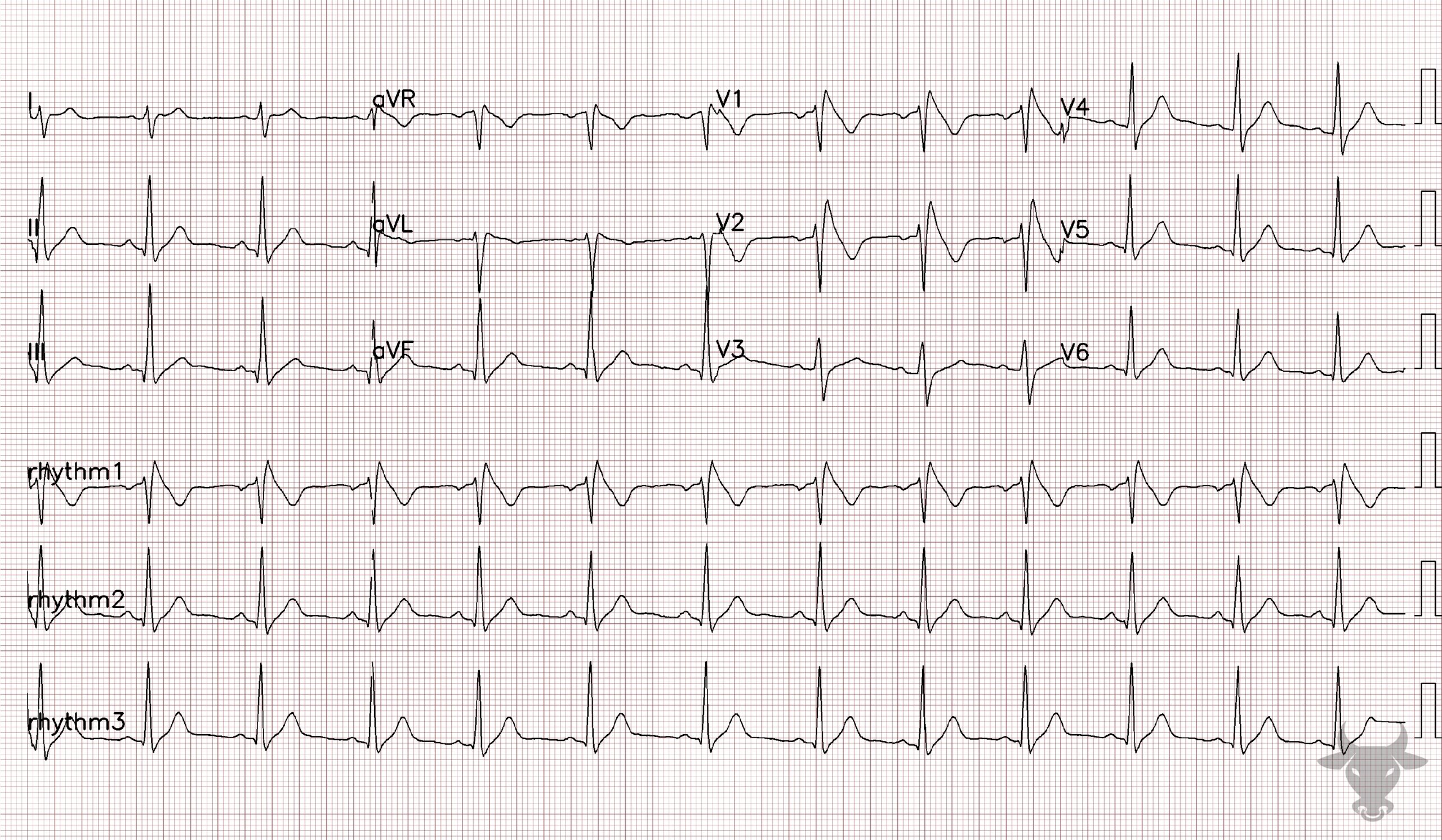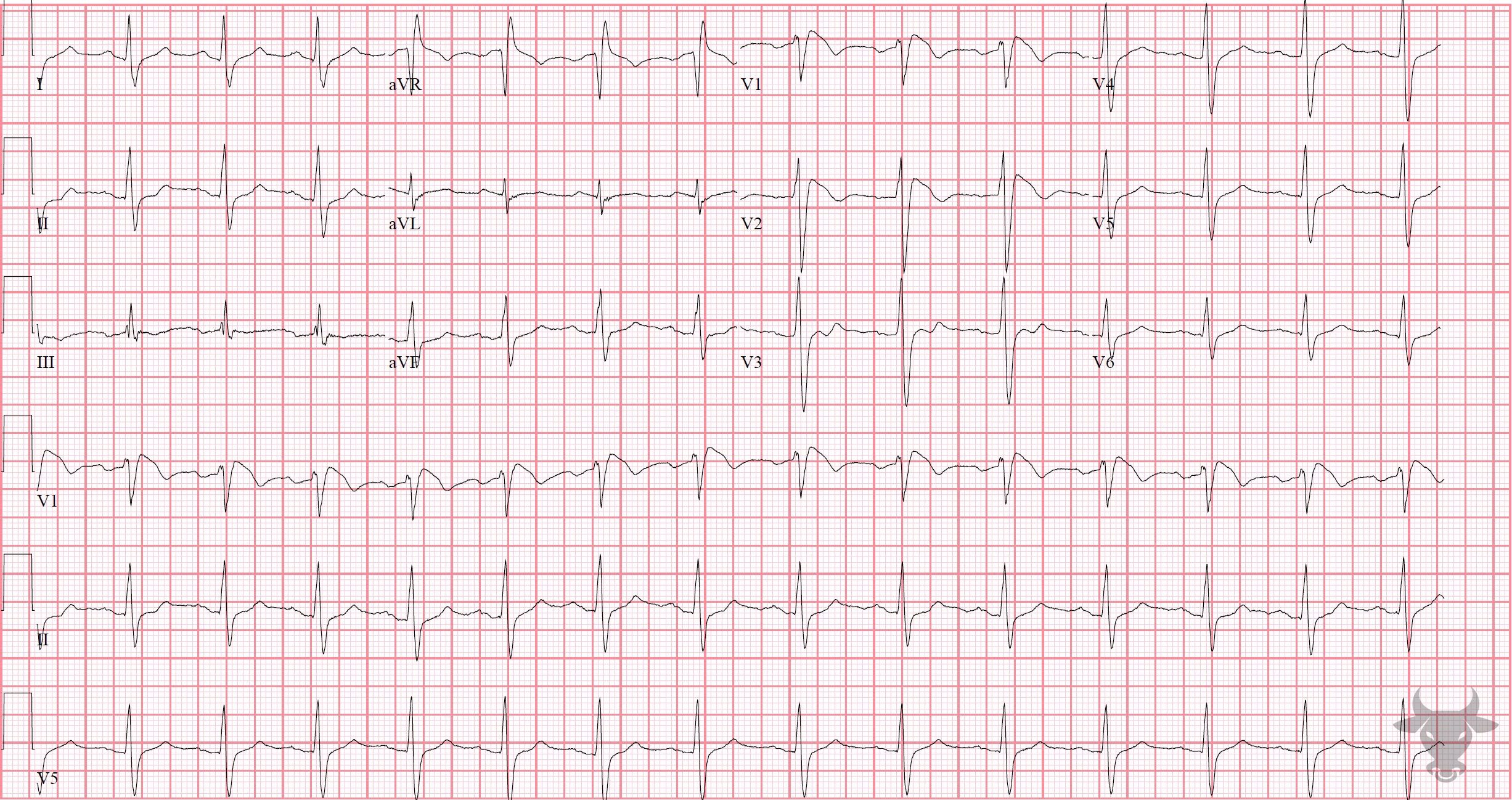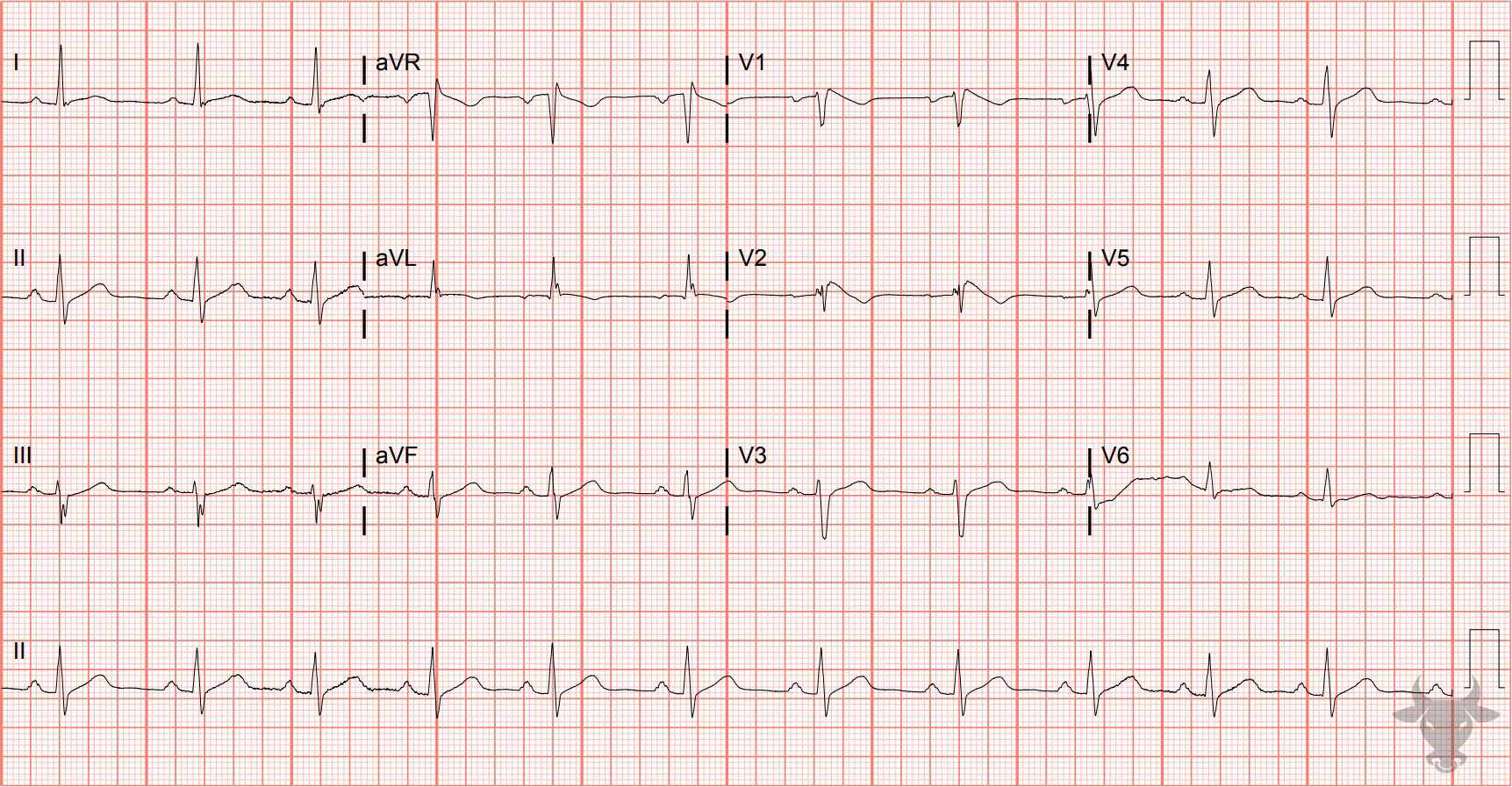Brugada syndrome is a sodium channelopathy with a characteristic ECG pattern (pseudo-right bundle branch block pattern with down sloping ST segment elevation in V1 and/or V2) and an increased risk of sudden cardiac death, in the absence of gross structural heart disease. Type I, or coved-type Brugada pattern, is characterized by ST segment elevation of ≥2 mm with a coved-type morphology in ≥1 right precordial lead. The Brugada type II, or saddle-back pattern, is not diagnostic of Brugada syndrome, and can look similar to an incomplete right bundle branch block with a broad R’ wave. Patients with Brugada syndrome may only manifest typical Brugada morphologies when the channelopathy is unmasked by infections, ischemia, drug use (such as ajmaline, flecainide, or procainamide), or hypokalemia. Patients with Brugada syndrome should be admitted for an automatic implantable internal cardioverter-defibrillator.
Brugada Syndrome

Examples

Brugada Syndrome
Type I Brugada pattern in a patient that presented with syncope. This patient was admitted and received an implanted defibrillator.
Brugada Syndrome
Type 1 Brugada pattern in a patient presenting with syncope.
Brugada Syndrome
Type II, or saddle-back, Brugada pattern. Type II Brugada can look very similar to an incomplete right bundle branch block, but the R’ wave in V1 and/or V2 is broad, rounded, and with a slow descent to an ST segement that remains at least 1 mm above the baseline (in contrast to the sharp descent of the incomplete right bundle branch block).
Brugada Syndrome
Type I Brugada pattern in a patient who presented with presyncope.References
- Sieira J, Brugada P. The definition of the Brugada syndrome. European Heart Journal. 2017;38(40):3029-3034.
- de Luna A, Garcia-Niebla J, Baranchuk A. New Electrocardiographic Features in Brugada Syndrome. Current Cardiology Reviews. 2014;10(3):175-180.
